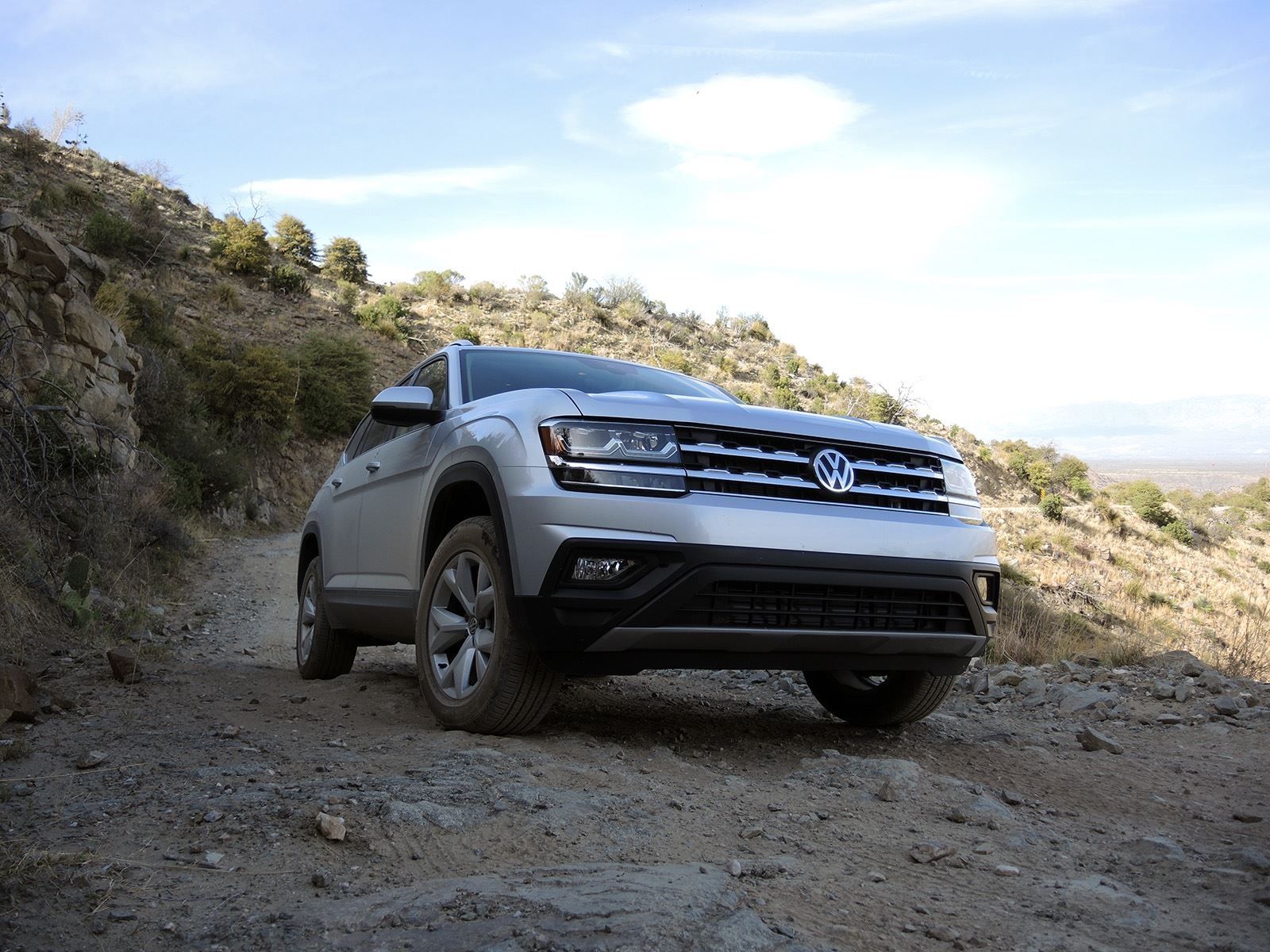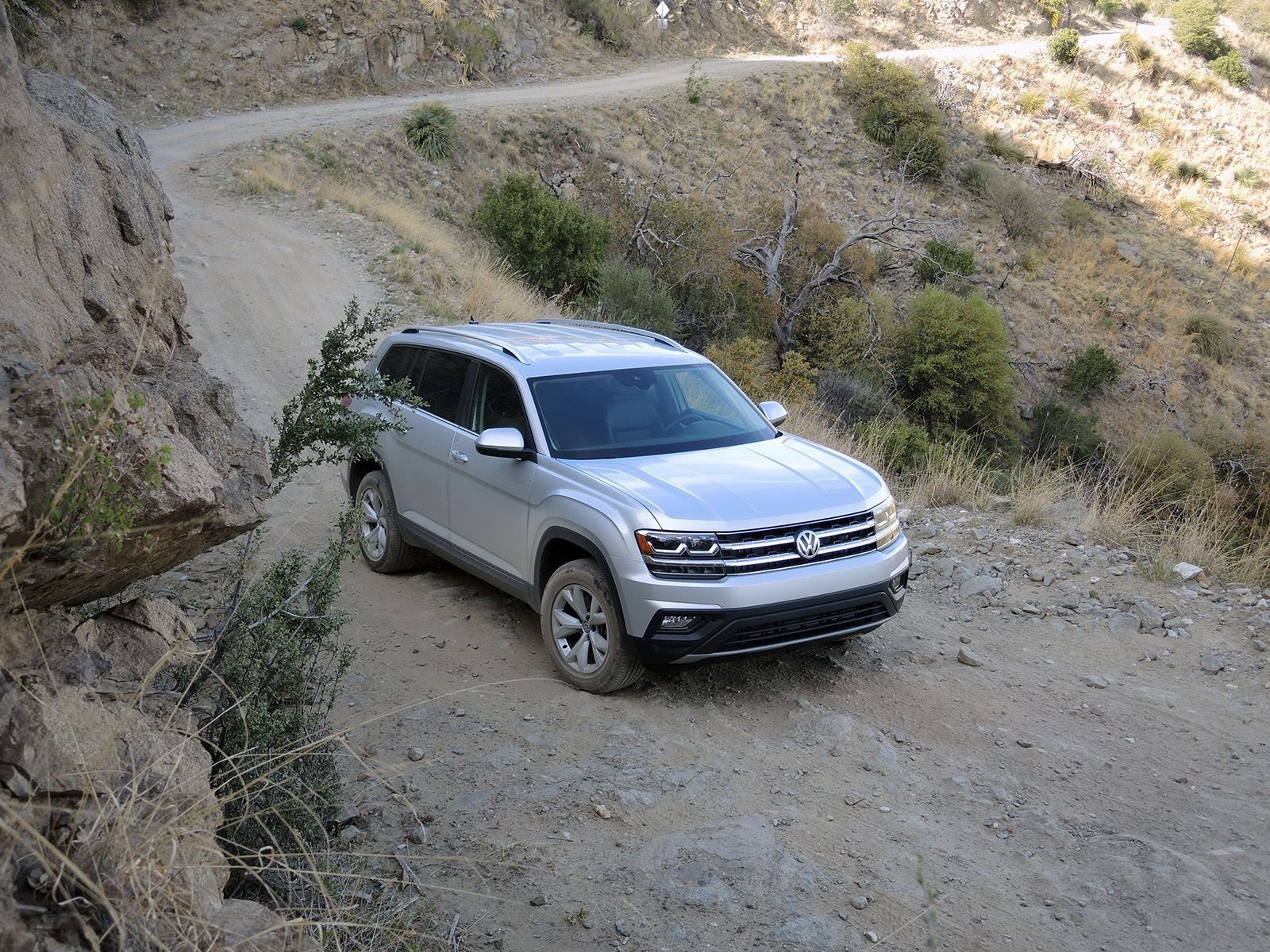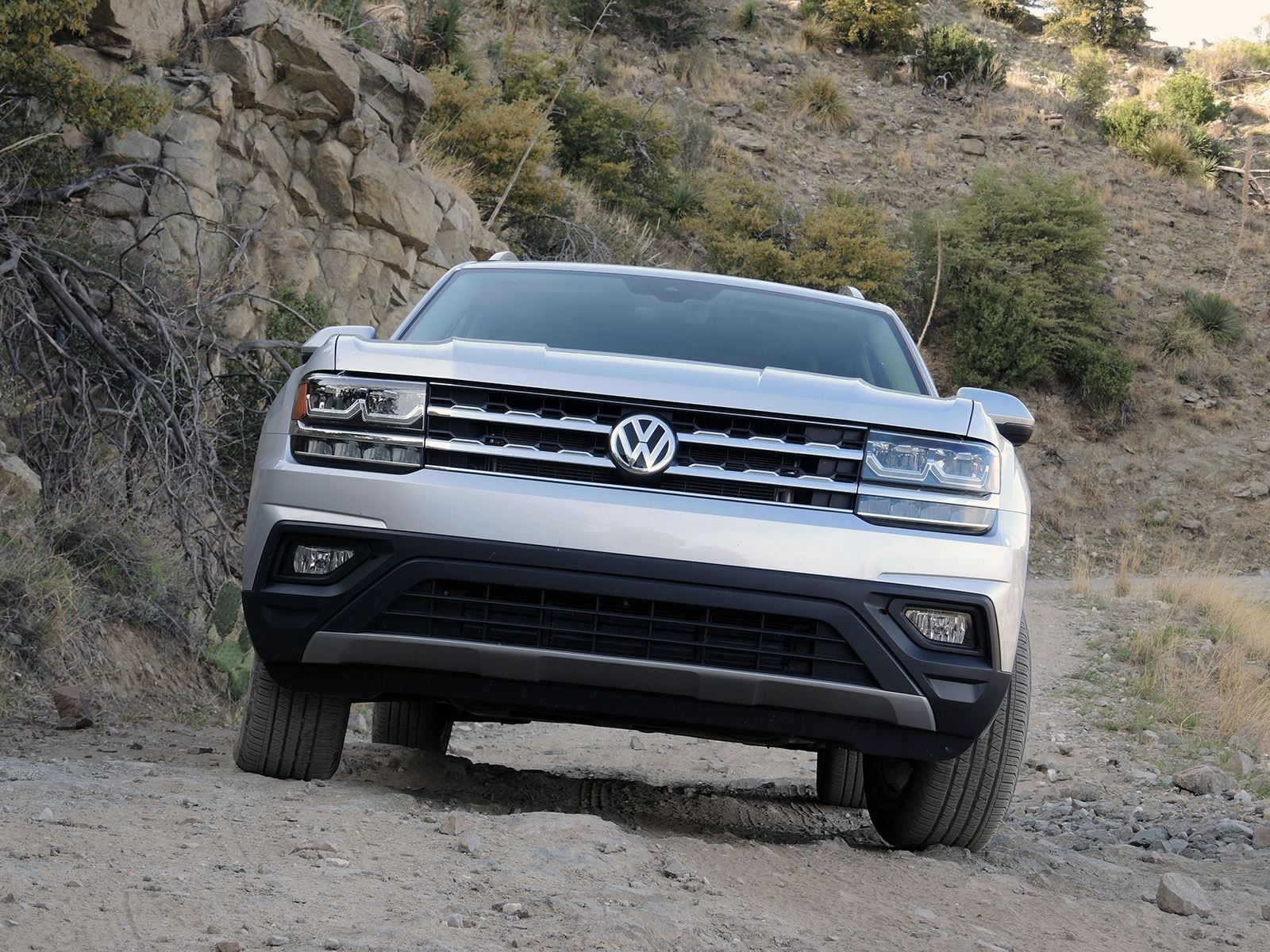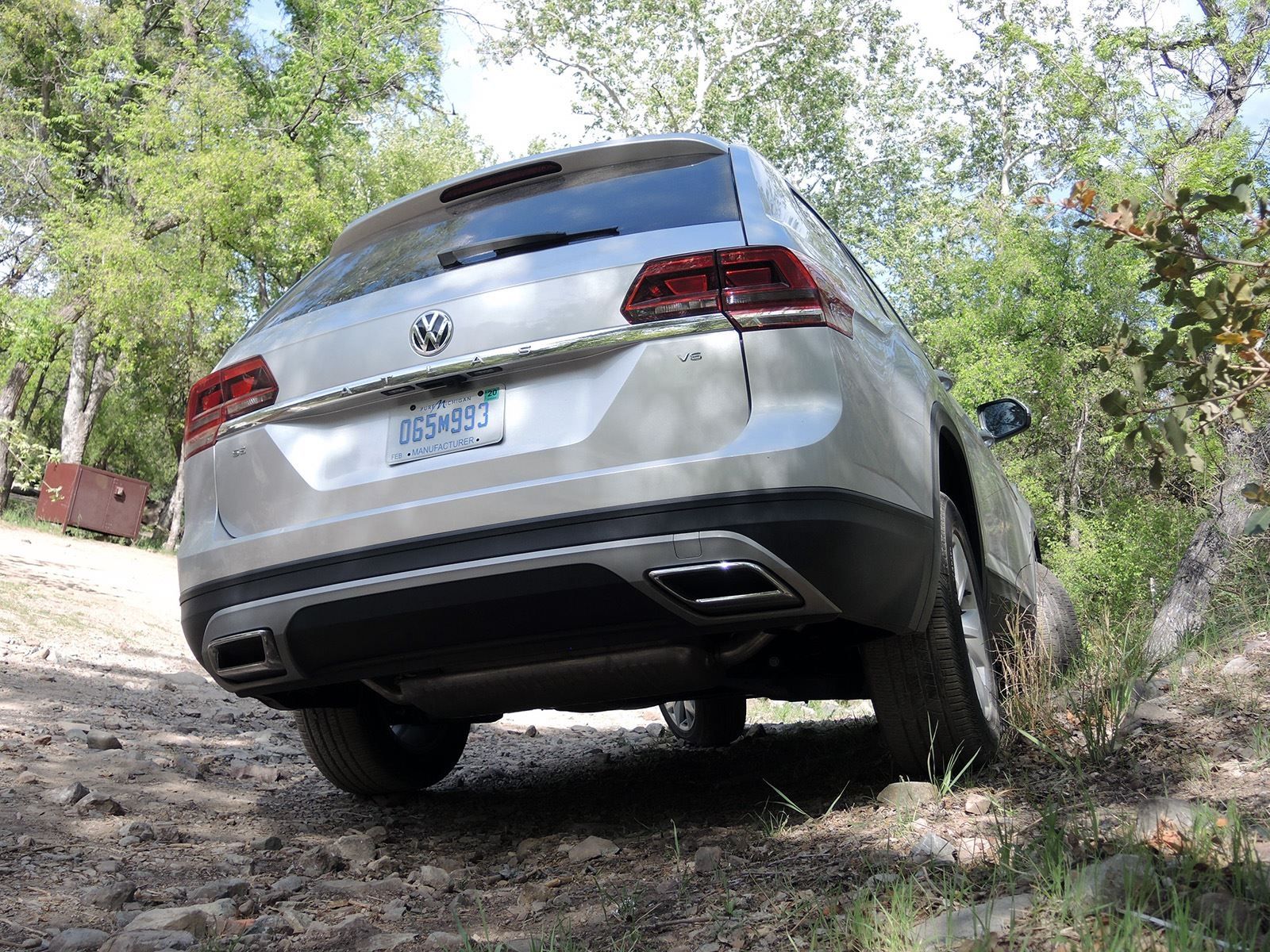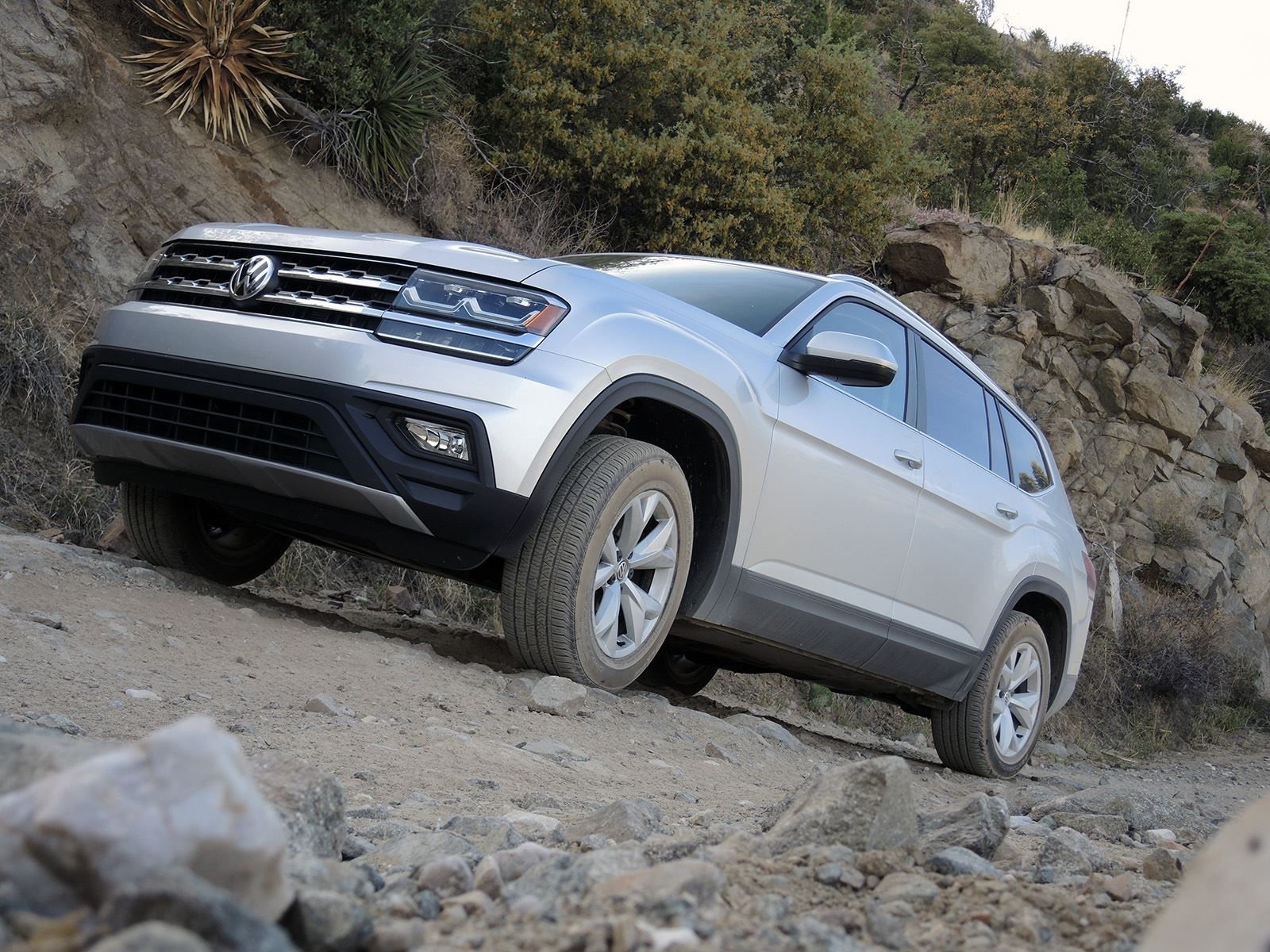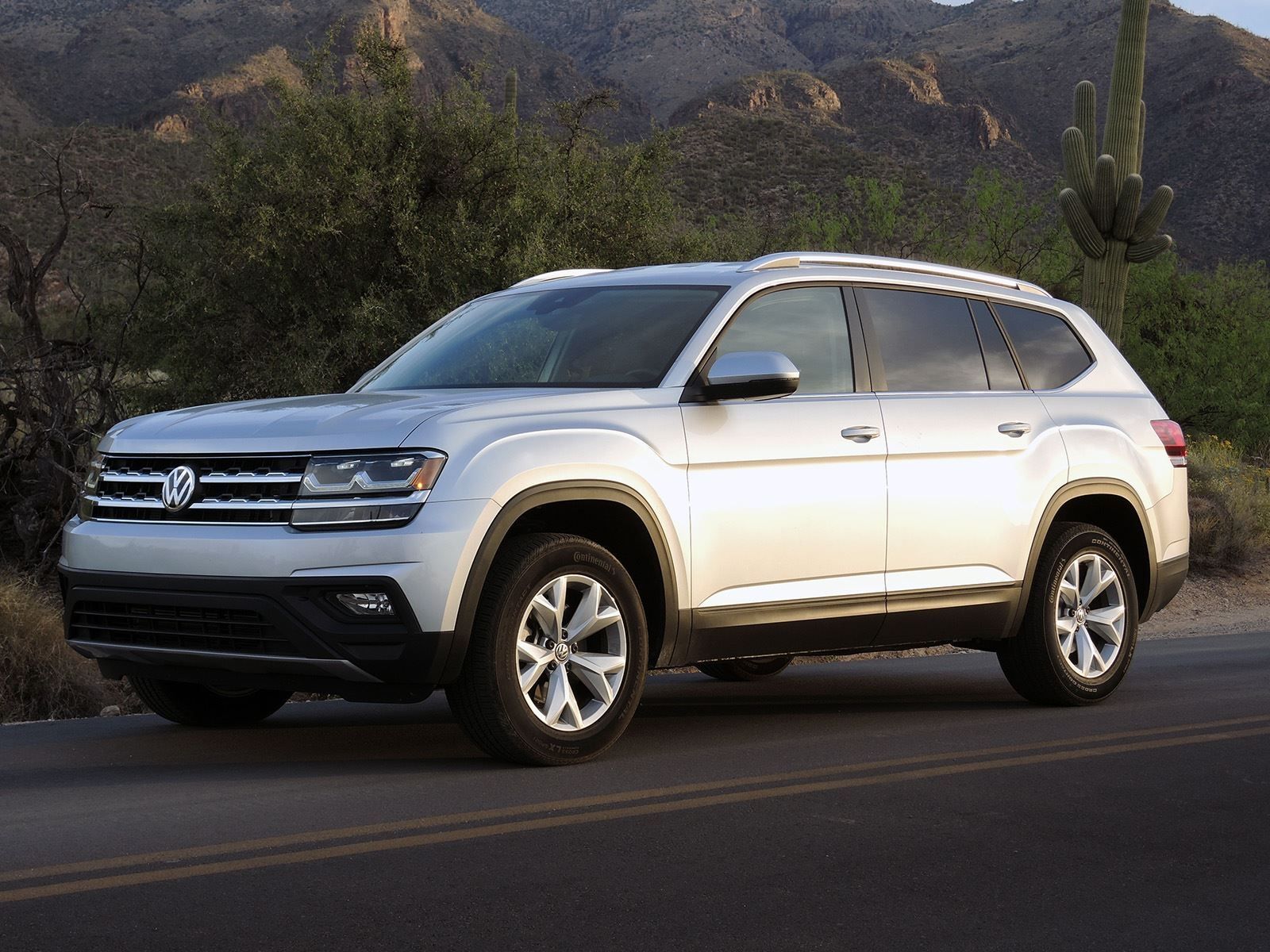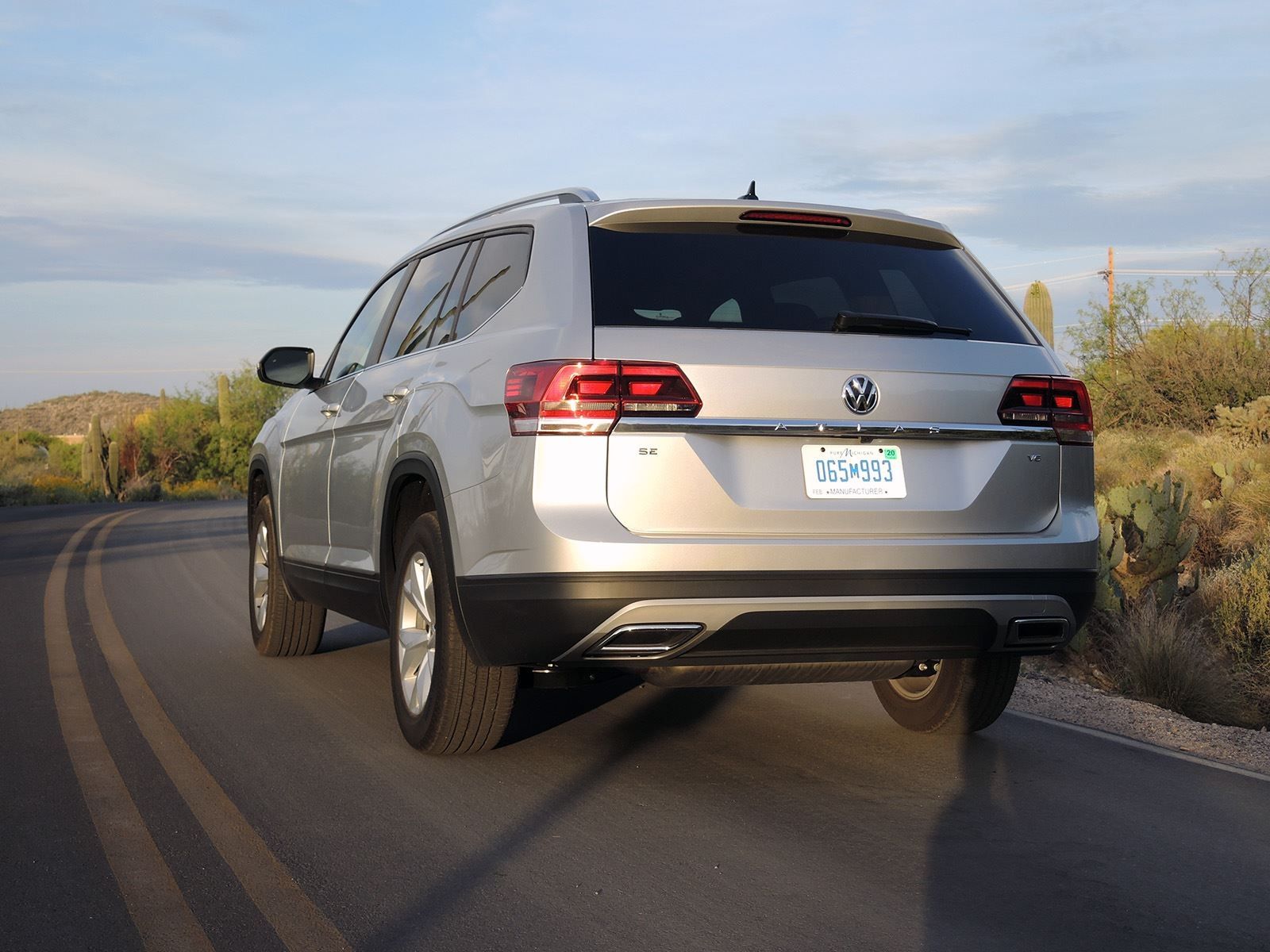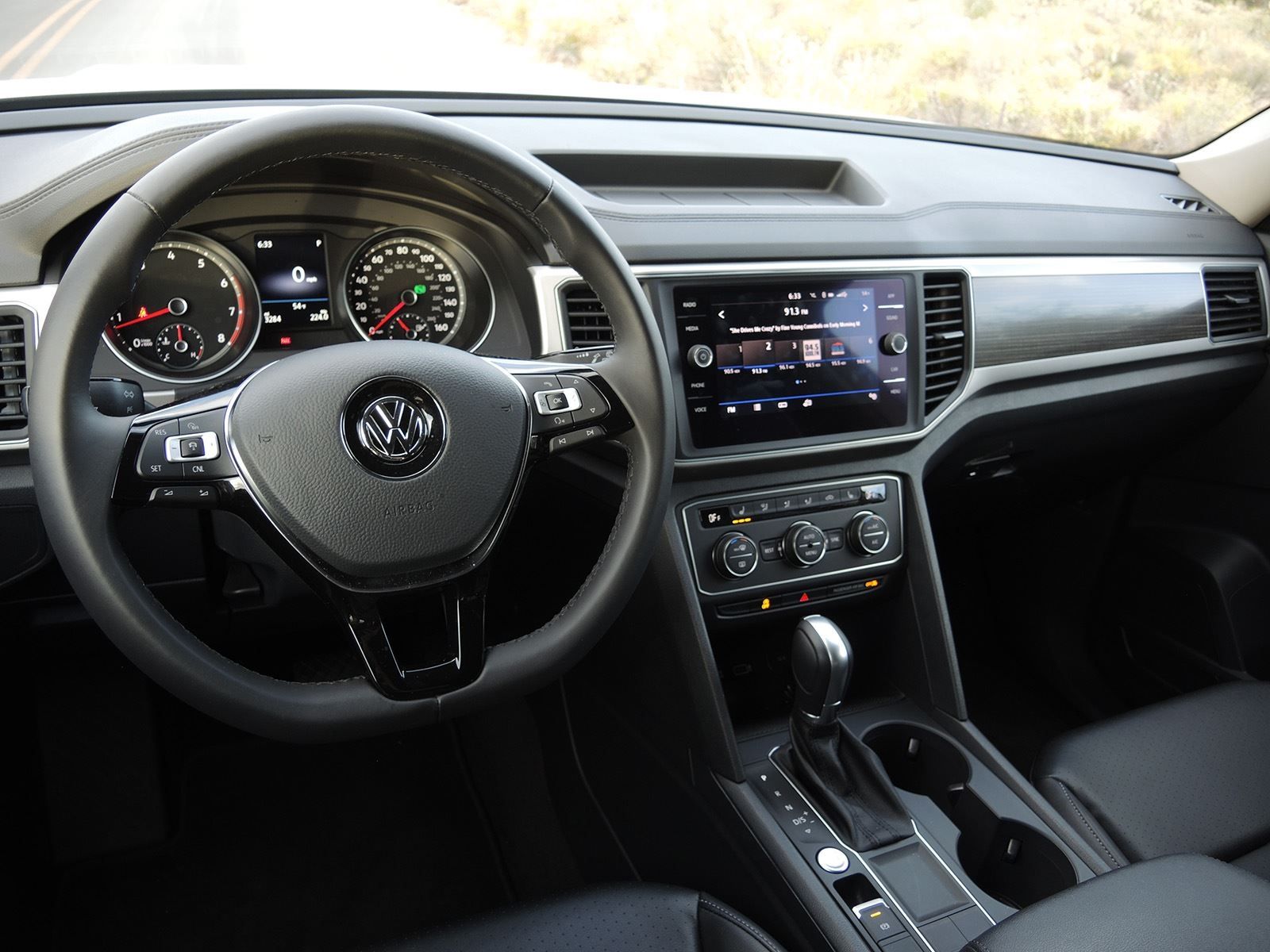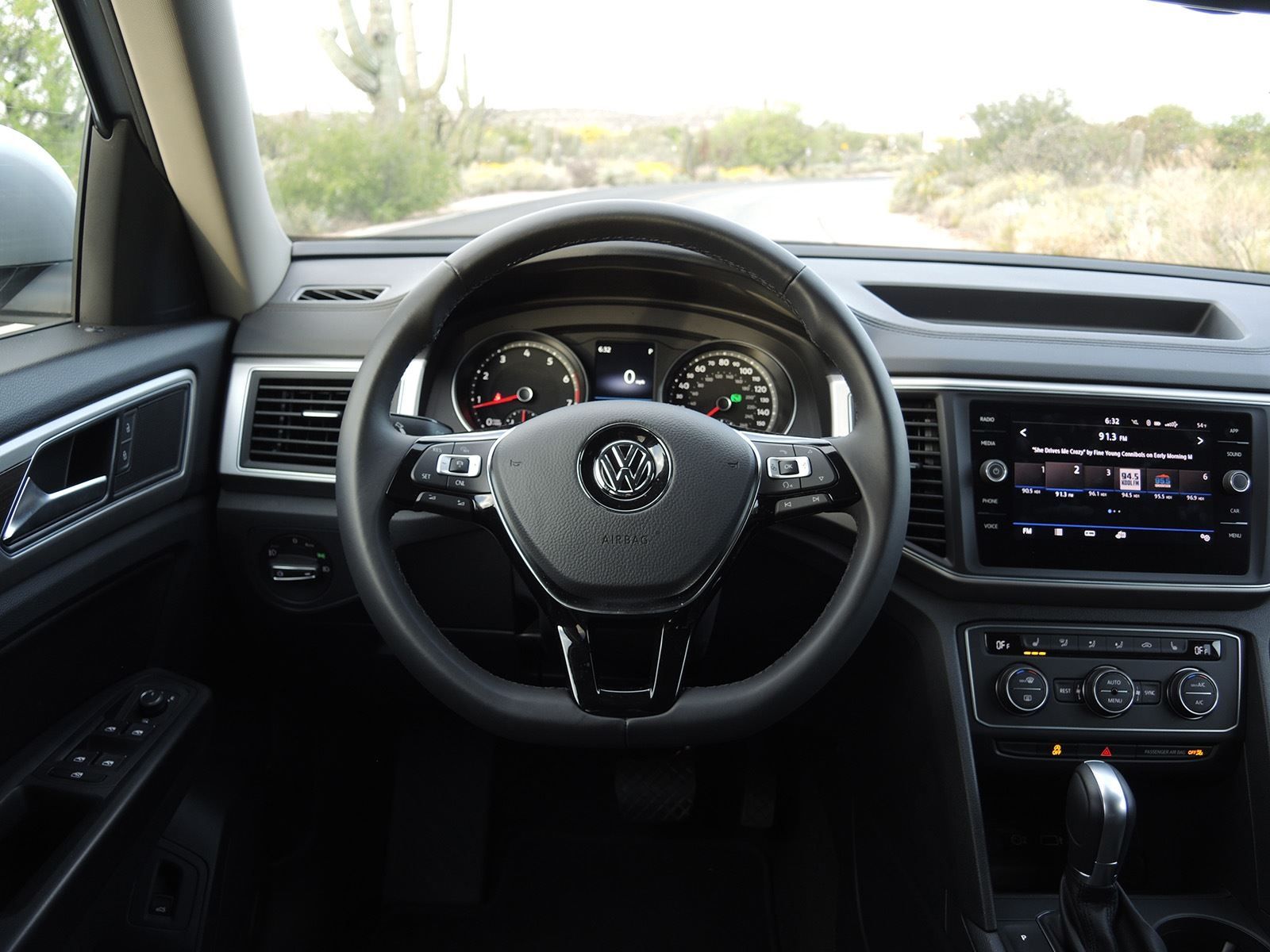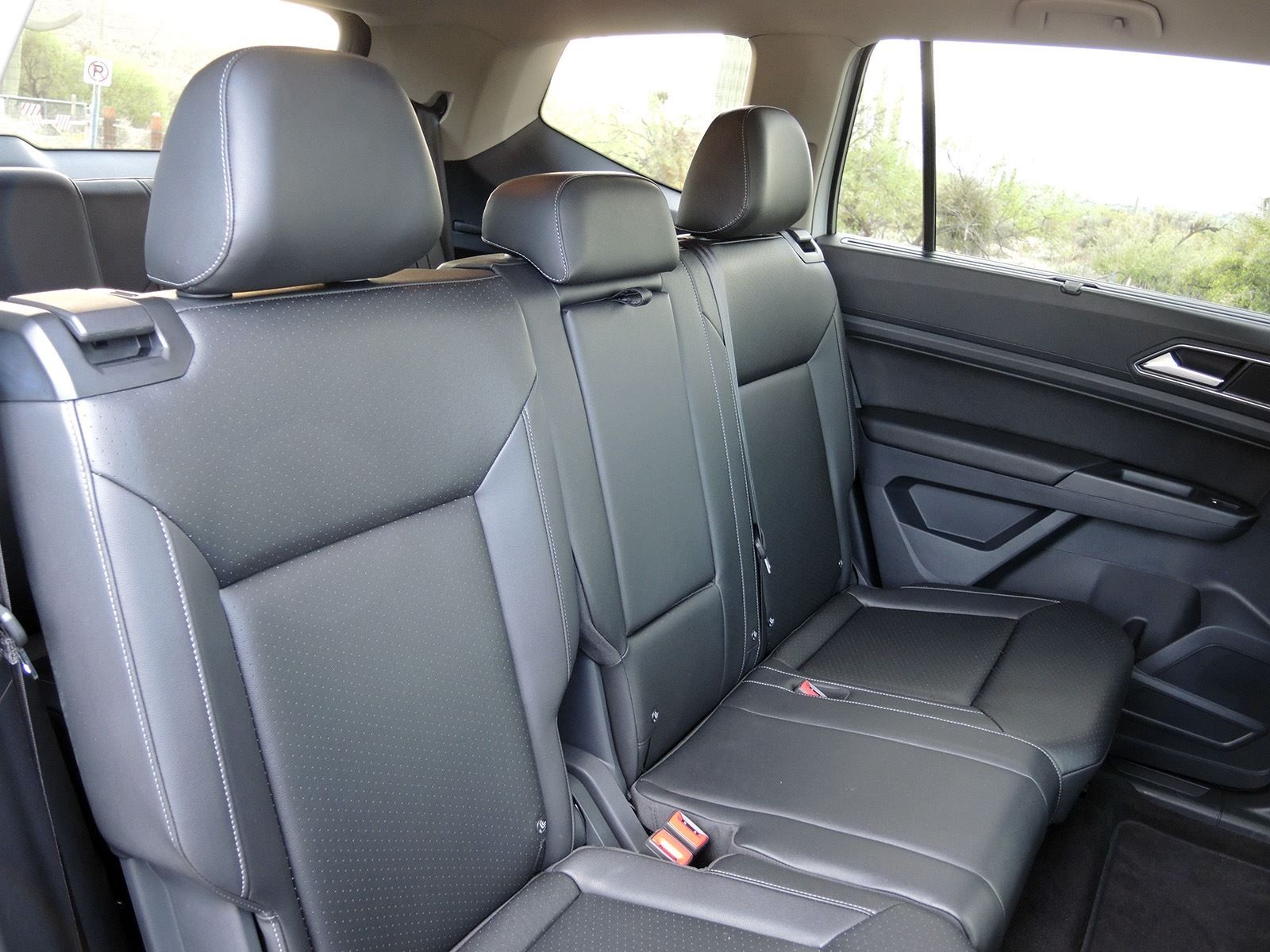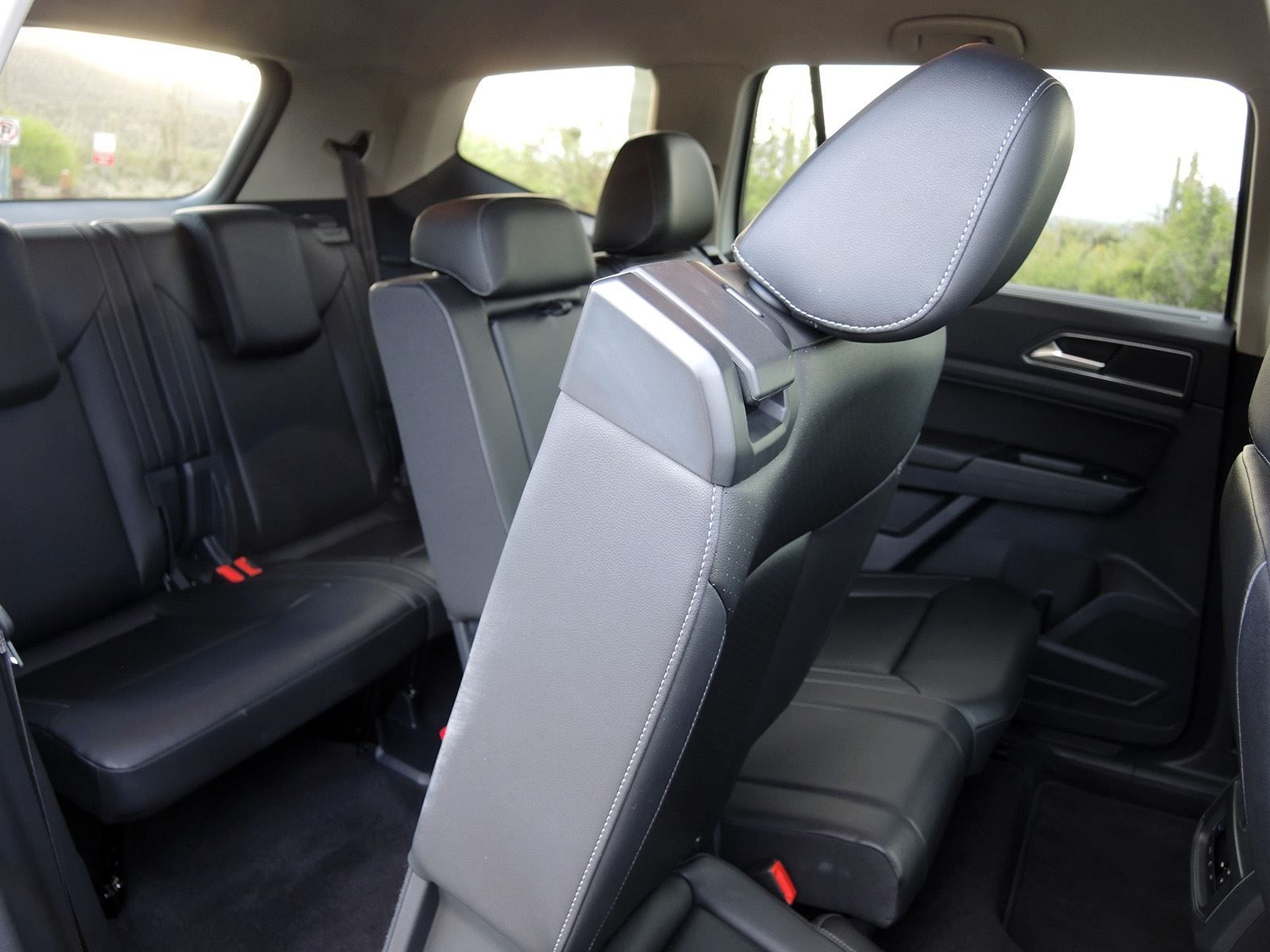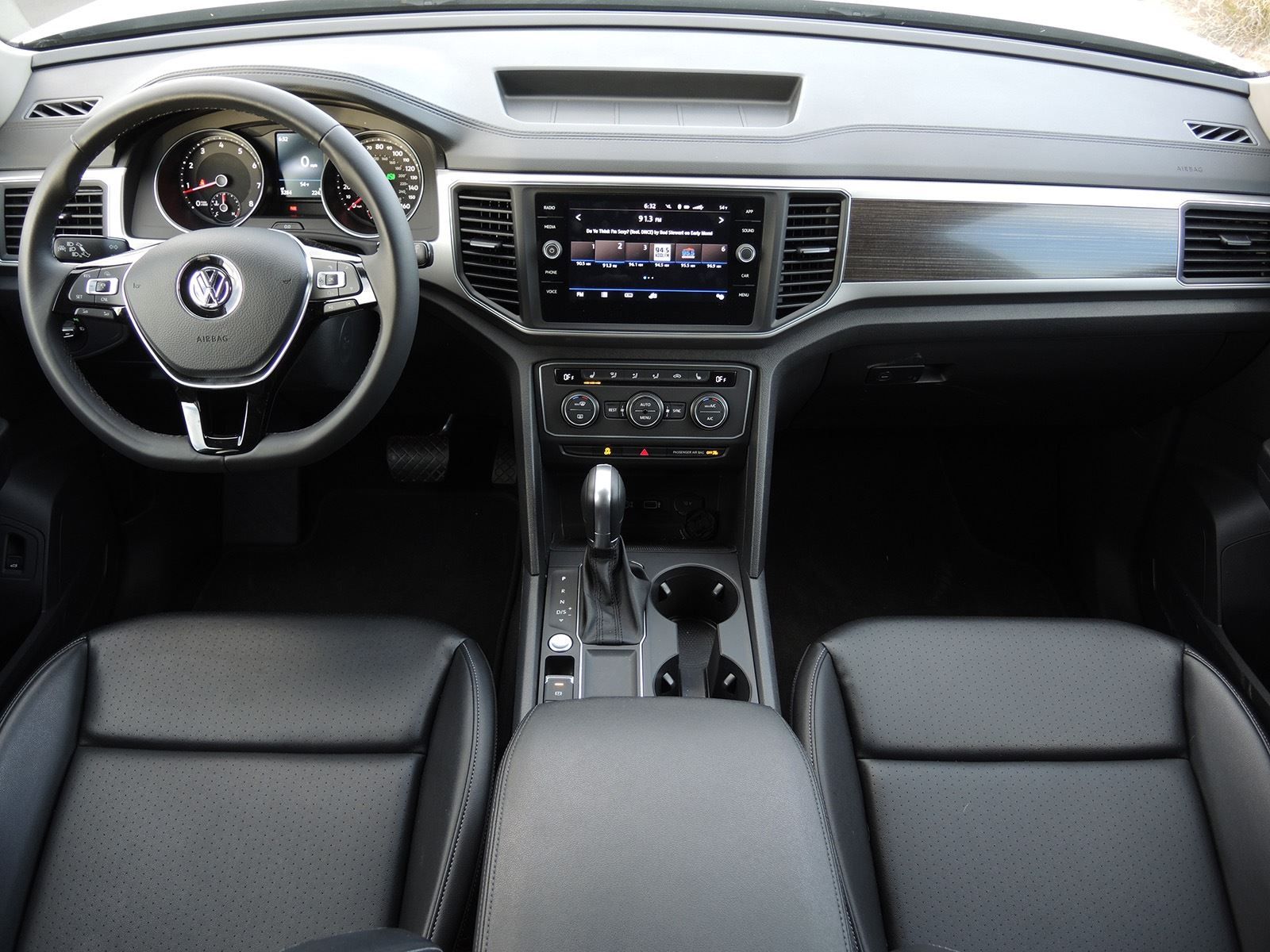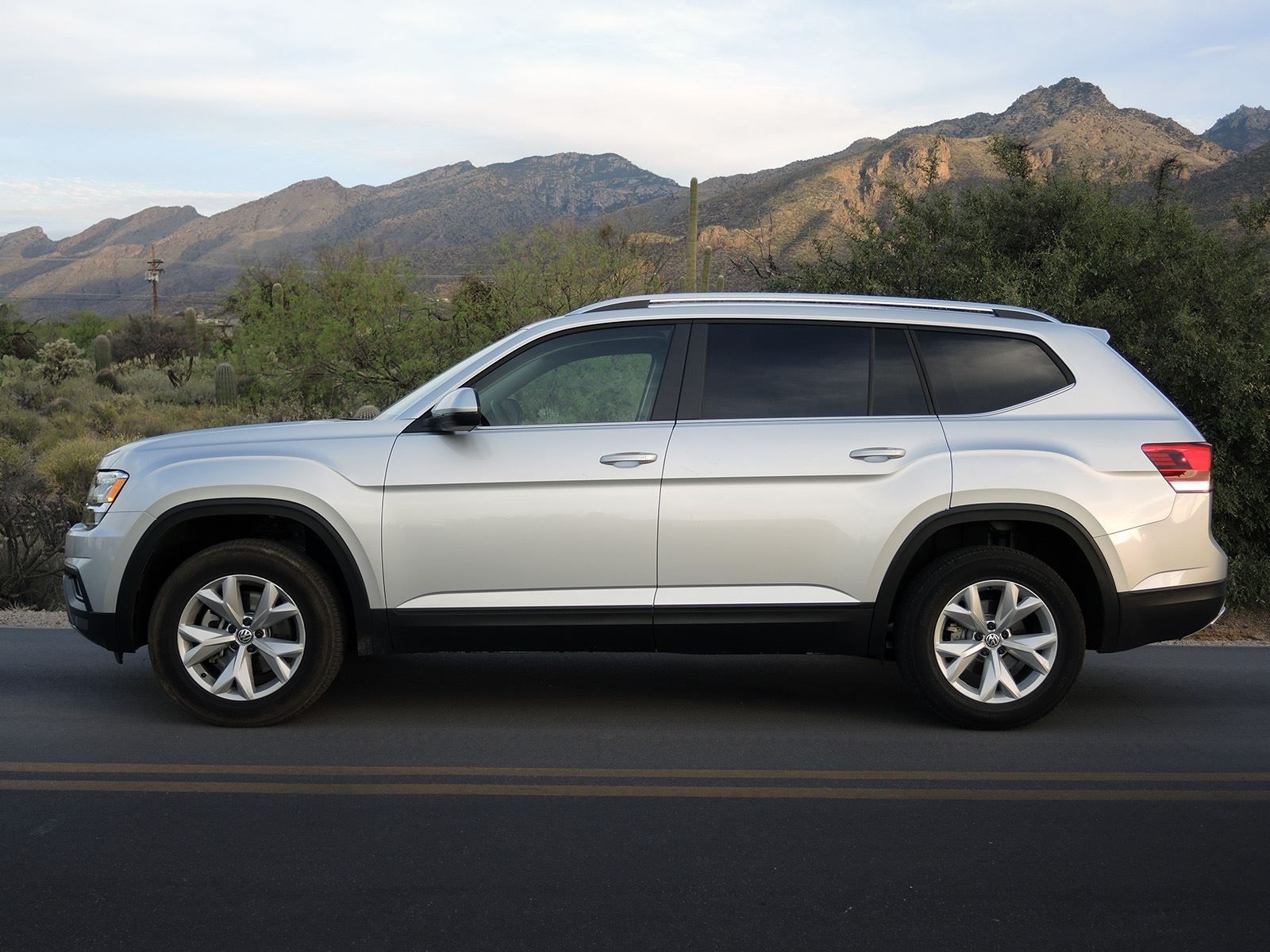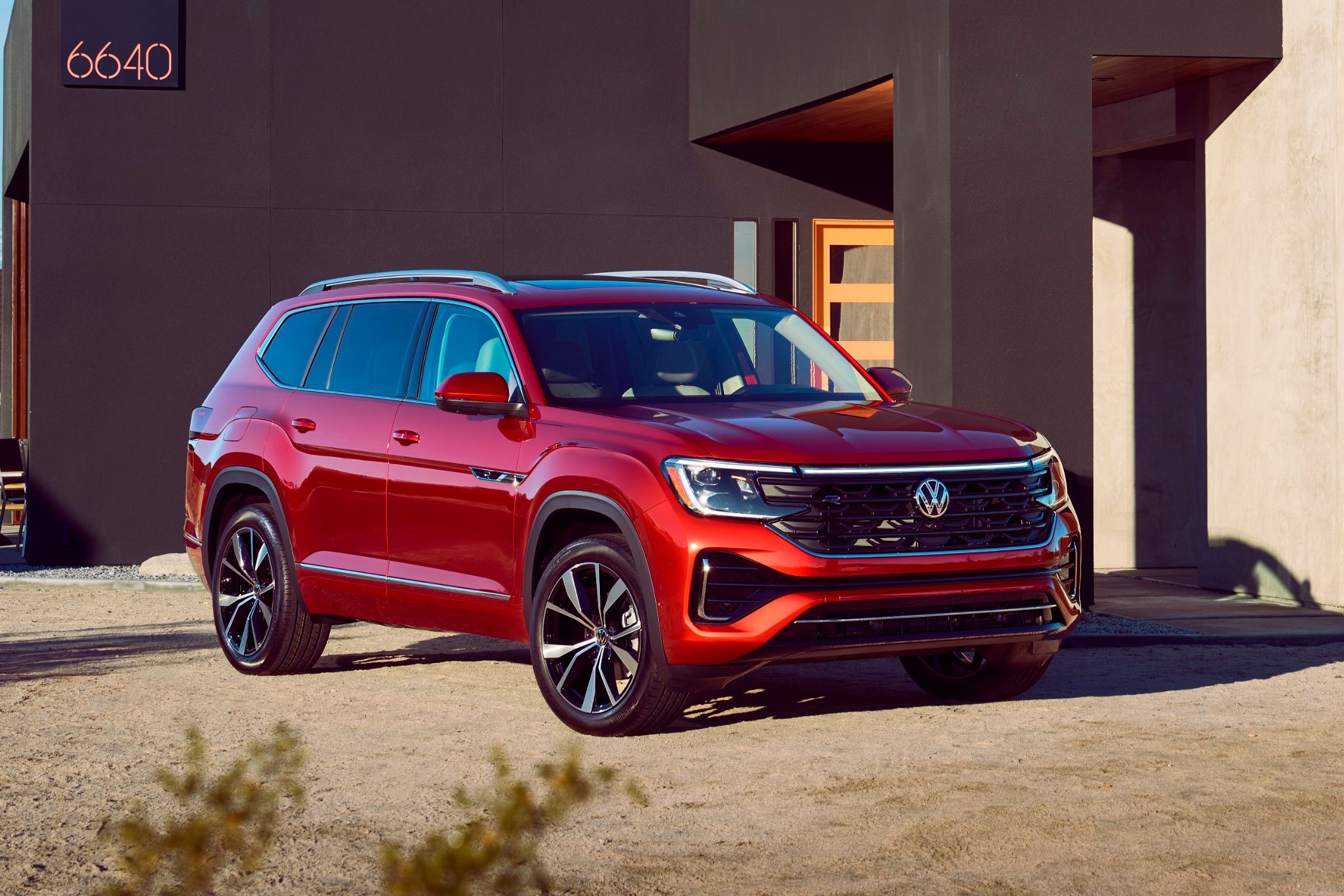
Deltoids, triceps, trapezius. Those are three of the main muscles the body recruits when it has to hoist something above its head to bear weight on the shoulders. When worked long and hard enough, this group of muscles contributes to that classic V-shaped torso bodybuilders spend hours sculpting in the gym. It's perhaps of little surprise, then, that Volkswagen felt compelled to give its new large SUV, named Atlas after the Greek Titan condemned to hold the world on his shoulders for all eternity, such a muscular body.
Because of its past and present designs, it's an oxymoron to think about Volkswagen as a purveyor of boxy proportions. Even the VW 181 (also known as the Volkswagen Thing), a car that could give a Mercedes G-Class a lesson on sharp angles, is overshadowed by smooth classics like the original Beetle or the Volkswagen bus and even modern favorites like the Golf. The question we had is whether the Atlas' off-road performance could live up to the capable persona its exterior projects. Not that off-road capability is relevant in this segment anymore, but when Volkswagen rings you up and asks if you want one of its tall 4Motion-equipped vehicles while nearby trails beckon, who is going to say no?
In the past we borrowed a front-wheel drive version of this well-equipped utility vehicle but only got to strut its large and shockingly agile proportions around the cityscape. With confidence instilled in us by the knowledge that Volkswagen's 4Motion system had our backs, we planned a route that began near the Biosphere 2 at the northern base of Southern Arizona's Santa Catalina mountains. Containing 25-miles of dirt, rock and steep hills that limit passage to sedans that strayed from the GPS' guidance, we felt confident this would be the perfect trail to tests the independent suspension-equipped Atlas without letting its road tires humiliate it. And then trouble struck.
Due to a cataloging error, we were actually driving a standard front-wheel drive Atlas SE instead of the 4Motion version. It's a problem we noticed when the off-road drive mode selector was curiously absent from its home below the gear shifter-replaced by a blank slate of plastic trim. At least our Atlas had the 3.6-liter V6 engine onboard in leu of the turbocharged 2.0-liter four-cylinder that carries a 41 horsepower deficit to the V6's 276 ponies. Given that the back road up the Catalinas is rated as an "easy" trail according to various off-roading websites, we decided to give the climb a green light despite getting the wrong SUV. What's the worst that could happen anyway?
Our quest to answer questions whether they plague the gearhead community or not took a toll on our cortisol levels even though the front-wheel drive Atlas endured its torture like a champion. At the beginning of the road is a semi-flat section of rocky road that mimics a Baja trail. That's where the jarring bumps begin. Take the road fast like you're in a Raptor and the Atlas' road-tuned suspension begins to rumble with unease. It's the first hint that Atlas does in fact shrug, partially because the electric steering does nothing to convey the stress the unibody chassis is under and because there is no sense the shocks have a taut bedrock to rest on when they bottom out.
From beginning to end the suspension is all butter, and that meant the Atlas hobbled over this section of trail as if it were resting on jello. Since it's based on the same MBQ platform that underpins the Golf and Passat, the Atlas has high levels of fluency on city surface streets. But its confidence is quickly abandoned when mushy tire sidewalls start transmitting unpredictable bumps through the cavernous interior. Suddenly the smooth quiet ride that makes the Atlas feel like a Bentley on surface streets gives way to uneasy chatter. And then come the hills. It's tough for any one object to dominate the Atlas' windshield given its sheer size, but if you find a hill big and rocky enough to do the trick, it's best to have a spotter on hand.
With the low front end and tall rocks eliminating the prospect of gunning the Atlas up hills quickly before the front tire grip dissolves, it became necessary to get out of the SUV and plan a route-essentially turning what could have been a round of checkers behind the wheel of a Wrangler into a delicate game of chess. But that's the beauty behind the Atlas. As much as gearheads love to heap scorn on this new generation of front-wheel drive SUVs that are clearly designed with tame terrain in mind, their compact fuel-saving drivetrains have a grip advantage over rear-wheel drive SUVs.
When the front tires clawed for grip and howled while friction turned their rubber bodies into smoke, it was a telltale sign that we had picked the wrong route up the mountain. Try again with a better route and you land the satisfaction of feeling the 4,400-pound SUV climb over the rocks and cruise dirt roads before the next challenge shows up behind the windshield. With a tedious pace and two sweat-soaked occupants, the Atlas made its way up the entire mountain-a feat that signs near the base said it shouldn't be able to accomplish-where we were greeted by a soft paved road for the ride back down.
With the eight-speed automatic transmission making engine braking down the mountain easy, the quiet cabin allowed space for contemplation. That's when a number of aspects about the Atlas became clear. These include: 1) You can laugh at front-wheel drive SUVs underpinned by sedan and hatchback platforms (like the Atlas) all you want, but when push comes to shove, they can accomplish more than most rear-wheel drive SUVs and pickups can. Afterall, sometimes it's better to pull your way up the mountain than to push. 2) Even if our Atlas did have 4Motion, the soft suspension limits use on rocky roads. Best stick to the snow and mud because German designs, after all, tend to satisfy Arizona needs poorly.
3) The Atlas' rugged exterior is the automotive equivalent of ripped jeans. It implies its owner has an appreciation for rugged activities when in reality they're more likely to own road bikes and go skiing than get dirt under their fingernails. 4) If your hypothetical Atlas is going to spend most of its life running errands in the city (it will), get it anyway. Or wait for the Atlas Tanoak to hit the market. You'll thank us later.

